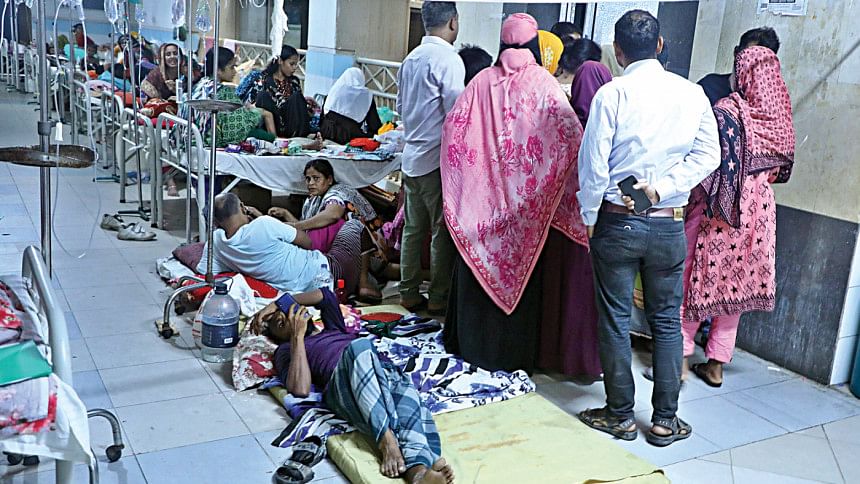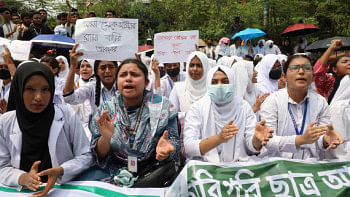Dengue Outbreak: 2023 already the deadliest year

With 10 new deaths recorded yesterday, the total number of dengue fatalities this year has risen to 283 – making this the deadliest dengue year since the first outbreak in the year 2000.
Earlier, the highest number of deaths recorded was 281 in 2022.
Of the 283 dead this year, 157 are males and 126 females, while the age group with most deaths was 21-25 years old.
Experts and doctors attributed this year's unusually high death toll to delayed hospitalisation, reinfections, and the presence of Den-2 and Den-3 out of all four dengue strains.
HM Nazmul Ahsan, associate professor at Shaheed Suhrawardy Medical College Hospital, stressed that patients need to be immediately hospitalised if they experience severe stomach aches, breathing difficulties, severe weakness, bleeding from gums or nose, and vomiting.
"If a patient is not hospitalised within 24 hours [of these symptoms surfacing], they may go into dengue shock syndrome."
There are two types of dengue shocks -- compensated shocks and decompensated shocks, he said, adding that if a patient is hospitalised immediately after their compensated shock, they won't reach decompensated shock – during which chances of recovery is only 50 percent.
Meanwhile, the number of dengue cases outside the capital has been increasing fast. However, Dhaka still holds the highest number of dengue deaths this year – 226 out 283.
According to the Directorate General of Health Services, apart from the 10 new deaths recorded yesterday, nine of which were in Dhaka, 2,589 people were hospitalised across the country in the 24 hours till yesterday morning.
Of them, 1,444 were outside the capital.
Of the total 59,716 dengue cases logged this year, 27,154 were outside Dhaka.

Of the districts outside the capital, the highest number of dengue cases recorded so far – 2,252 – was in Chattogram, while Chandpur and Barishal had 1,051 and 916 respectively.
Entomologist Manzur A Chowdhury said the infection rate outside Dhaka usually increases when those infected in Dhaka migrate out of the capital.
"Earlier, the epicenter [of the viral disease] would be Dhaka and would go outside if patients would travel out of the capital. But this year, the number of patients seemed to have simultaneously increased in Dhaka and outside, due to the intense breeding of the Aedes mosquito."
More so, many people carrying the virus travelled outside the capital during Eid-Ul-Azha, which also may have contributed to the spread, he added.
Manzur further said it is now necessary to break the transmission chain, and one of the main methods is to use mosquito nets while sleeping, wearing clothes that protect exposed body parts, spraying repellants and ensuring clean water, especially if stagnant, every week to avoid getting bitten and destroy all possible Aedes breeding sources.
Using foggers and killing adult Aedes is of utmost priority while using larvicide and reducing breeding sources are equally important, he said.
GM Saifur Rahman, another entomologist, said there is a lack of necessary equipment to conduct proper anti-mosquito drives. So, the government will have to give necessary attention in this regard.
"It would be much easier to control the spread of the disease and breeding of the mosquitoes if a vector management authority, who would be able to provide proper guidelines, was set up.
"The LGRD ministry should send at least some written guidelines, however brief, to the district level authorities, regarding the elimination of Aedes breeding sources and personal protection."

 For all latest news, follow The Daily Star's Google News channel.
For all latest news, follow The Daily Star's Google News channel. 



Comments